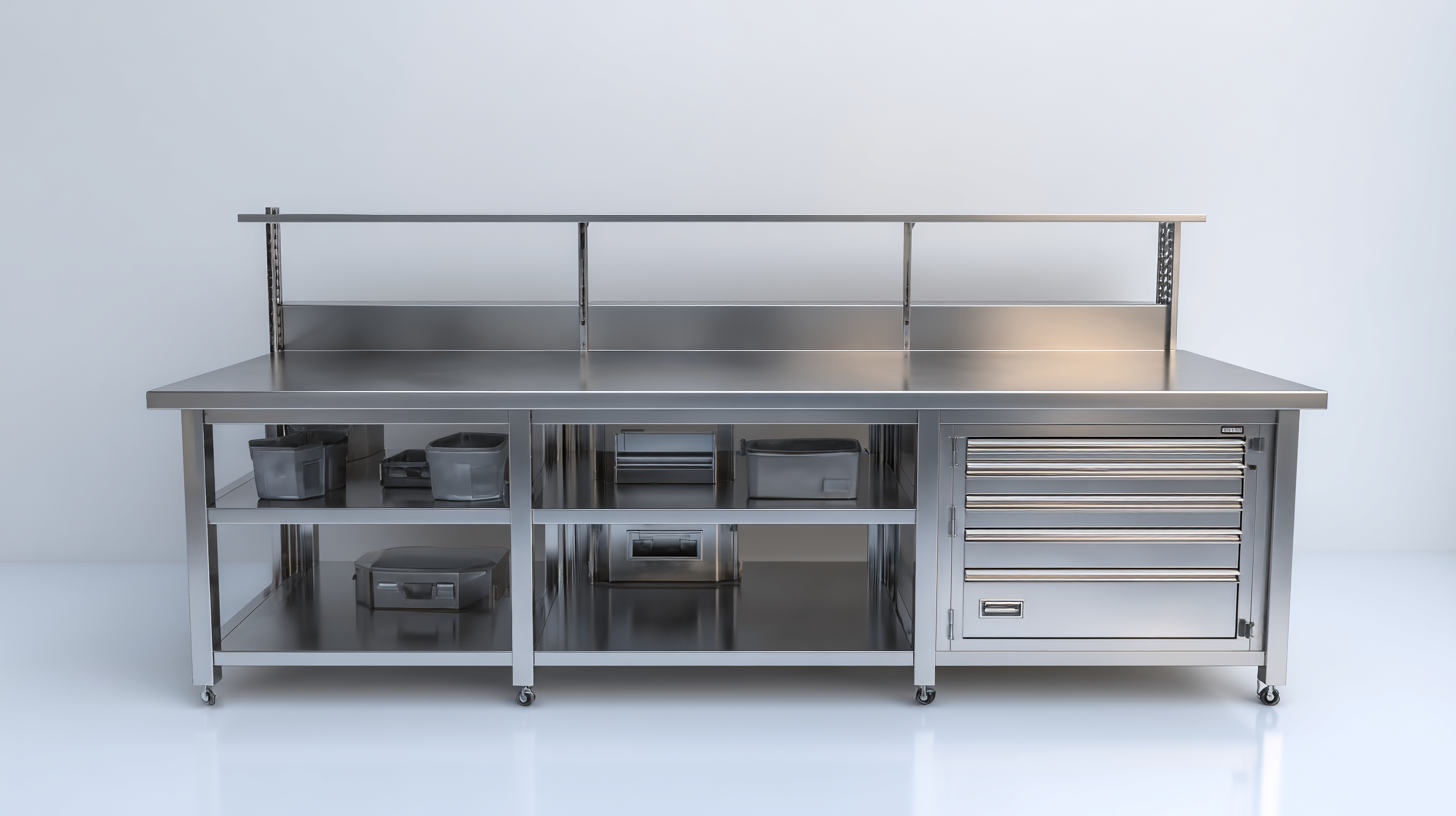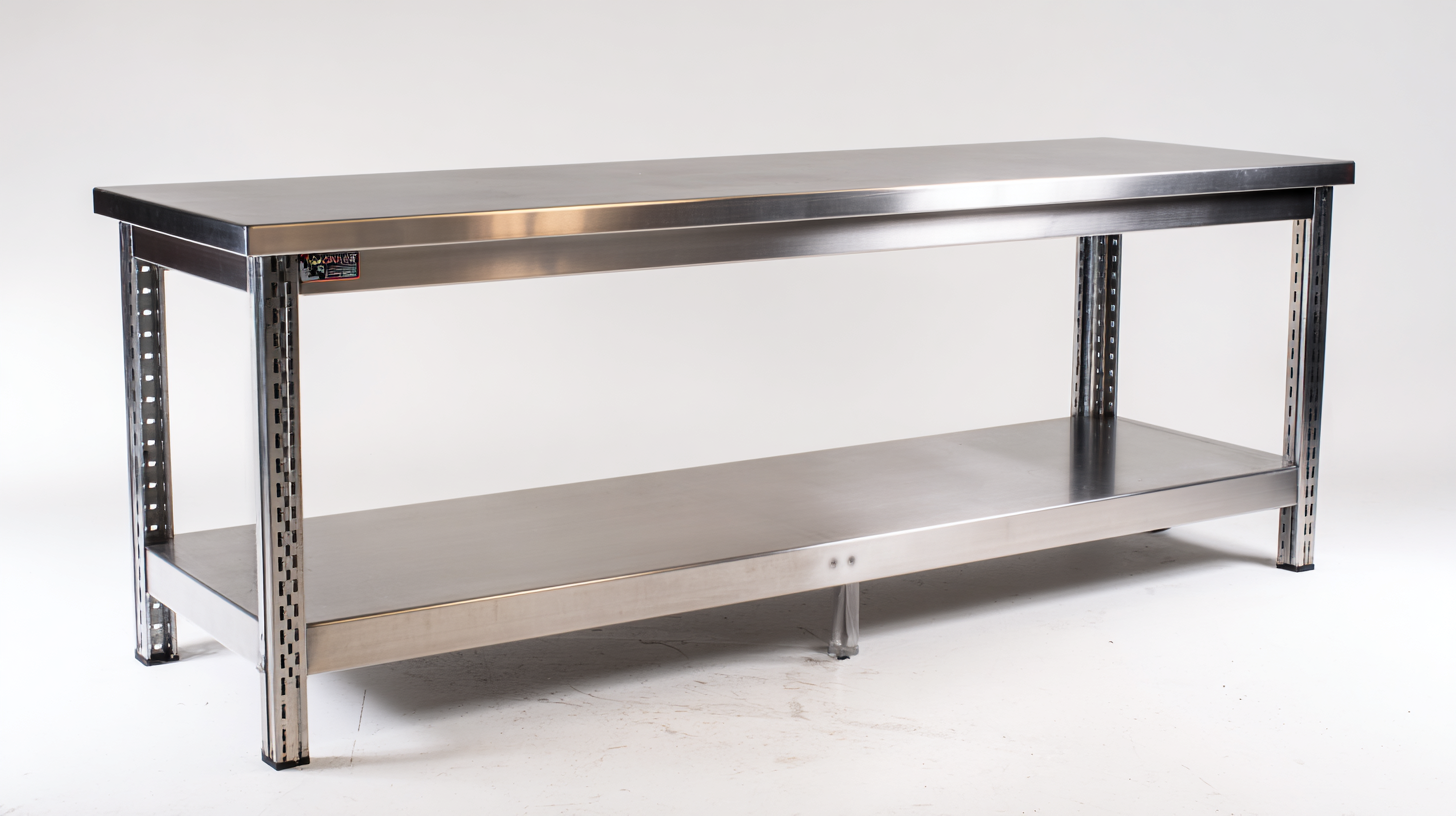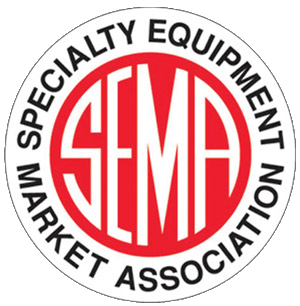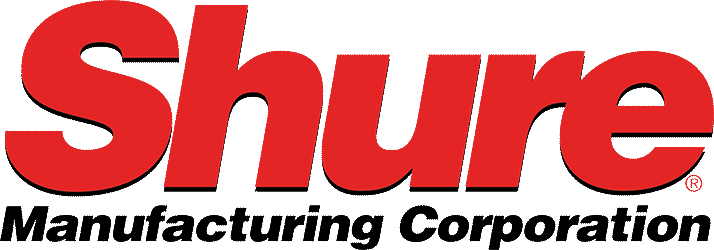Advantages of Using Stainless Steel Workbench for Your Industrial Needs
In the fast-paced industrial landscape, the choice of workspace equipment can significantly impact productivity and efficiency. Among various options available, the stainless steel workbench stands out due to its unparalleled durability and resistance to corrosion, making it a preferred choice in diverse sectors, including manufacturing, food processing, and laboratory environments. According to a recent report by IBISWorld, the industrial equipment manufacturing sector has experienced consistent growth, with an increasing emphasis on ergonomic and sustainable solutions, like stainless steel workbenches, which can withstand rigorous use while maintaining hygiene standards. These workbenches not only offer strength and stability but are also easy to clean and maintain, addressing the critical needs for safety and efficiency in industrial settings. As industries evolve, investing in high-quality stainless steel workbench systems can ultimately lead to enhanced workflows and operational success.

Benefits of Stainless Steel Workbenches in Industrial Settings
When setting up an industrial work environment, the choice of workbench is pivotal. Stainless steel workbenches stand out for their durability and versatility, making them an excellent choice for diverse industrial settings. One of the significant benefits of using stainless steel is its resistance to corrosion and staining, which is vital in industries where hygiene and cleanliness are paramount. Furthermore, their robust structure can withstand heavy loads, ensuring reliability during intense tasks.

When you're arranging your workspace, consider these tips for maximizing the utility of your stainless steel workbench. First, keep the surface clear by organizing tools and materials in drawers or tool racks. This not only improves workflow but also maintains the integrity of the work surface. Additionally, consider incorporating wheels on your workbench, especially if you need to frequently rearrange your setup or require a mobile workspace. This flexibility allows for better use of space and facilitates multitasking across various projects.
Moreover, regular maintenance of your stainless steel workbench is crucial. Use a soft cloth and mild detergent to keep the surface clean and free from scratches. This will help prolong its lifespan and maintain its professional appearance, effectively enhancing your workplace’s efficiency and aesthetic.
Durability and Longevity of Stainless Steel Workbenches
When it comes to industrial work environments, the choice of workbench material can significantly impact productivity and safety. Stainless steel workbenches are increasingly favored because of their remarkable durability and longevity. Unlike traditional wooden or laminate work surfaces, stainless steel resists scratches, dents, and corrosion, making it an ideal choice for settings that demand high sanitation standards, such as food processing and pharmaceutical industries. According to a recent industry report, stainless steel surfaces can last up to three times longer than their wood counterparts, providing a significant return on investment over time.
In addition to their longevity, stainless steel workbenches offer superior resistance to chemicals and extreme temperatures. This is particularly advantageous for industrial applications involving harsh substances, where other materials may degrade rapidly. A survey of industrial manufacturers indicated that over 70% reported fewer maintenance costs and extended lifespan for their stainless steel equipment compared to other materials. This resilience not only enhances the safety of the workspace but also contributes to a more efficient workflow, as employees can rely on their equipment performing optimally under the most demanding conditions.
Hygienic Properties of Stainless Steel for Food and Medical Industries
Stainless steel workbenches have become an essential fixture in both food and medical industries due to their outstanding hygienic properties. According to a 2021 report from the International Journal of Environmental Research and Public Health, stainless steel surfaces significantly reduce bacterial contamination by up to 99.9% when properly cleaned and maintained. This is particularly crucial in food production settings where cross-contamination can lead to serious health risks, such as foodborne illnesses. The non-porous nature of stainless steel ensures that harmful bacteria cannot penetrate the surface, making it easier to maintain a sterile environment.
In the medical field, these workbenches play a vital role in supporting sterile procedures. A recent analysis by the Canadian Medical Association Journal highlighted that stainless steel equipment is an effective barrier against pathogens, thus reducing the risk of infections during surgical operations. Moreover, stainless steel’s resistance to corrosion and staining makes it ideal for environments that require strict cleanliness and durability. As healthcare facilities continue to prioritize infection control measures, the integration of stainless steel workbenches is likely to rise, reinforcing their critical function in maintaining hygiene and ensuring safety.

Design Versatility: Customizing Your Stainless Steel Workbench
When it comes to industrial workspaces, the versatility of a stainless steel workbench is unmatched. Customizing your stainless steel workbench allows you to tailor it to your specific operational needs. Whether it's for a manufacturing environment or a laboratory, these workbenches can be adjusted in height and size, ensuring that employees have a comfortable and efficient workspace. You can also integrate various storage solutions, such as drawers or shelves, that keep tools and materials within arm’s reach without sacrificing space.
Tip: When customizing, consider incorporating wheels or casters into your design. This will enable easy movement of the workbench for cleaning or reconfiguring your workspace as needs change.
Additionally, choosing the right finish for your stainless steel workbench is essential. A brushed finish is not only aesthetically pleasing but also helps minimize scratches and smudges, making maintenance easier.
Tip: Don’t forget to focus on the layout. Design your workbench with workflow in mind, placing essential tools and frequently used items in the most accessible locations to maximize productivity.
Cost-Effectiveness of Investing in Stainless Steel Workbenches
Investing in stainless steel workbenches offers significant cost-effectiveness for industrial operations. These workbenches are not only durable and resistant to corrosion, but they also possess a long lifespan, reducing the need for frequent replacements. This durability translates into lower long-term costs, as businesses can allocate their resources more efficiently without the constant financial burden of repairs and replacements associated with less resilient materials.
Moreover, stainless steel workbenches enhance industrial efficiency by providing a clean, hygienic workspace. Their smooth, easy-to-clean surfaces minimize the risk of contamination, which is crucial in sectors such as food processing and pharmaceuticals. The maintenance savings from their hygiene also contribute to a decrease in operational costs.
Additionally, the ability to customize stainless steel workbenches for specific tasks means businesses can optimize their workflows, leading to increased productivity and reduced overhead. In an era where efficiency and cost management are paramount, investing in stainless steel workbenches is a strategic decision that can yield substantial returns.
Footer
Resource Center
Contact Us
1901 West Main Street
Washington, MO 63090
Main Directory: 1-800-227-4873
Email: sale@pangcofurniture.com
Affiliations


